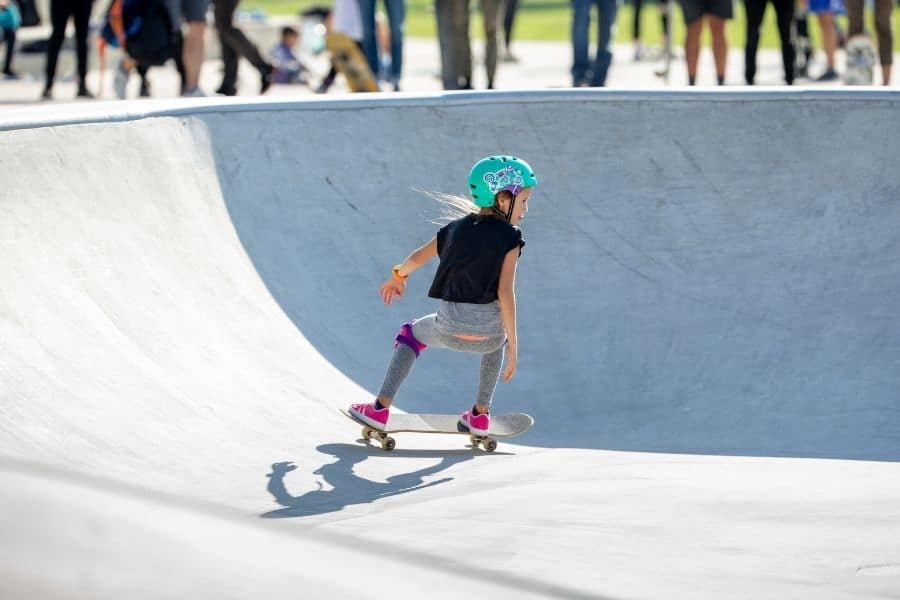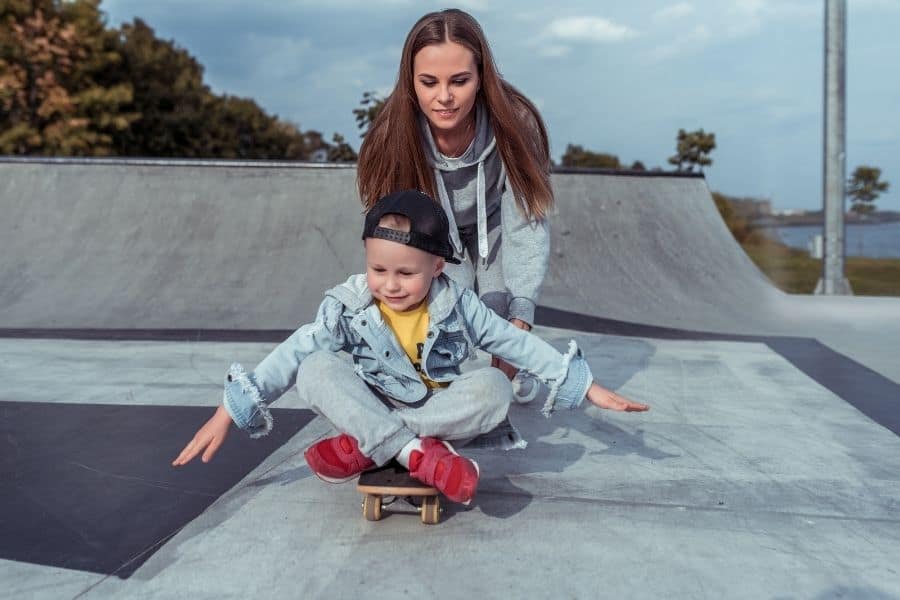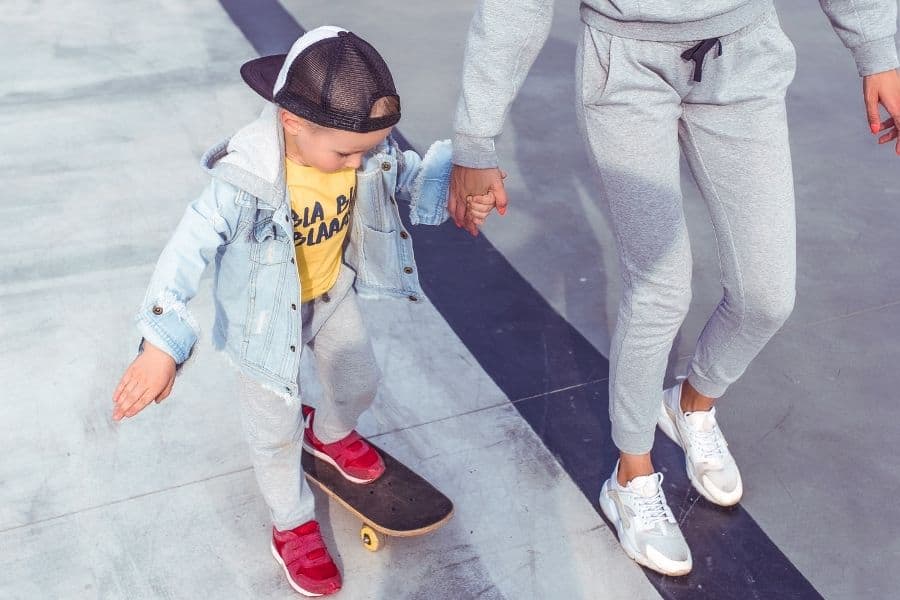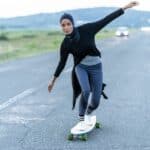While most parents eventually teach their children how to ride a bike, what should you do when your child wants to learn how to skateboard?
Many parents have never been skateboarding themselves and if they have, their skills are likely a little bit rusty. And yet, you still have your child begging you to buy them a skateboard for their next birthday.
Although the actual techniques may vary between parents, these pointers should help you to safely get your child cruising through the neighborhood on their new skateboard.
Table of Contents
How to Teach a Kid to Skateboard
Invest in a good quality children’s skateboard and protective equipment. Then, teach them how to balance on the skateboard before attempting movements. Begin balancing while on the carpet or grass and allow them to jump on and off the board. Take it slow and let them hold onto your hand when they move on the skateboard.
The First Step in Teaching a Kid to Skateboard is Preparation
But as a parent, you probably have this figured out already. Of course, you’ll need to buy your child a skateboard.
Fortunately, children’s skateboards are extremely affordable and most models are already equipped with safety features.
While you may be tempted to select the best bargain, higher-quality skateboards are recommended for beginners, as falls are likely to occur.
That’s why you should also invest in a helmet, grip tape, knee pads, and elbow pads to prevent injuries and reduce the impact of falls.

How to Teach a Kid to Skateboard
Many skateboarders also wear thick socks, pants, and long sleeve shirts to avoid scrapes and bruises.
Start Out Teaching the Kid How to Balance on the Skateboard

Teaching Balancing on a Skateboard
Even with adult learners, the basic techniques, such as balancing, standing, and posture must be mastered first.
When your child is initially learning how to stand on the skateboard and balance, it’s best to start out practicing on a carpet or a grassy area of the yard to prevent the skateboard from moving.
Allow your child to jump on and off the skateboard several times, and encourage them to try leaning and slightly bending their knees while on the skateboard.
Their front and back feet should remain a shoulder’s width apart, but their preferred stance should be the one that they feel most comfortable with.
When starting out, it is recommended to begin with an athletic stance and for your child to keep their weight on the balls of their feet, but it’s fine to switch to another stance that feels more comfortable as your child develops their skateboarding skills.
Take it Slow When Practicing Movements
If you happen to be into skateboarding yourself, you may actually have been eager to get your child on the board. While some people do recommend teaching your child to skateboard at a young age, it is also advised not to try to teach them until they are at least five years old.
Once the lessons do begin, patience is still key.
When it comes to skateboarding, confidence is a must, so you don’t want to begin the movement lessons until your child is comfortable standing and balancing on the skateboard, and is confident in their ability to attempt cruising.
When they first start riding on the board, you should hold their hands until they are ready to try moving on their own.
It is always best to skateboard on a flat surface to prevent injuries from falling. This could be your driveway, a smooth sidewalk, or a vacant basketball court.
You should hold off on the skate park until your child has mastered the basic skateboarding techniques, lest your child may inadvertently be influenced by peers to attempt tricks that they aren’t ready for.
While standing beside your child, instruct them to place one foot close to the truck’s bolts and have them slowly start moving forward while just walking their board along. If they insist on doing this alone, let them try it, but stay nearby.

Walking Skateboard Along
Once they are able to walk the skateboard along, then you should instruct them to take their back foot on and off of the skateboard.
After they have mastered that step, encourage them to try riding while you hold their hand and let go when they are ready to ride on their own.
Frequently Asked Questions about How to Teach a Kid to Skateboard
When Should a Child Learn to Skateboard?
While kids should be taught to skateboard at a young age, if you teach them too early, they will likely lack the ability to balance and may end up being injured. It’s advised to teach children how to skateboard when they are between the ages of five and ten years old.
Is Skateboarding Hard for Kids?
Skateboarding isn’t much more difficult for children than learning how to ride a bike would be. Fortunately, you don’t even need to know how to skateboard yourself to be able to teach skateboarding to your child. All you need to do is purchase a skateboard and safety equipment, supervise them, and be supportive.
What Skateboard Type Is Best for Learners?
Of course, when teaching kids to skateboard, you will probably want to stick with a children’s skateboard due to the smaller size, safety features, and affordable price, but in general, beginner’s skateboards and longboard skateboards are ideal for learners.
Conclusion
Basically, teaching skateboarding to a child is a lot like giving them biking lessons. The first lesson is balance and when they start riding, you hold on until they are able to cruise on their own.
Even if you don’t know how to skateboard yourself, you can still support your child in mastering the sport of skateboarding, which will keep them active and reduce the amount of time they spend playing video games.




